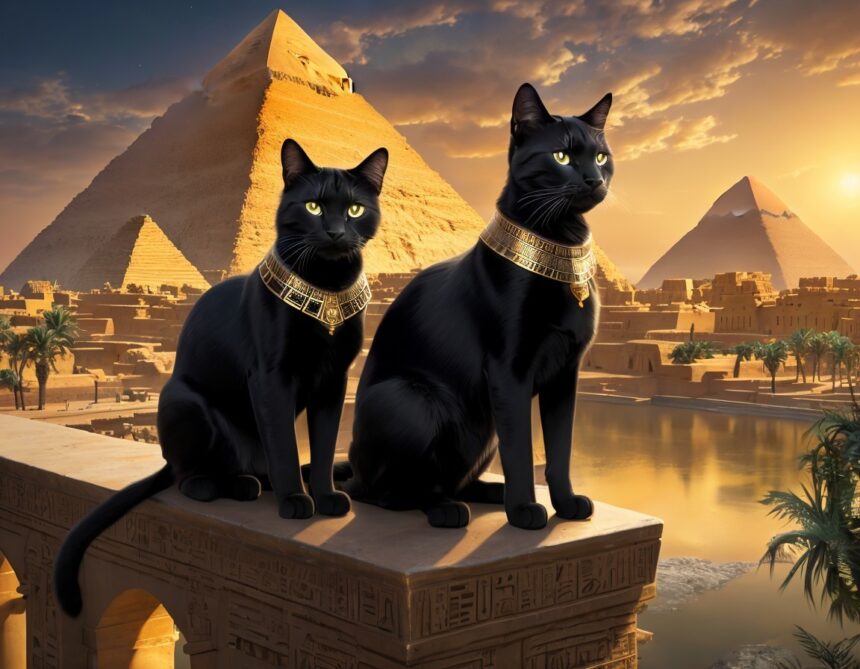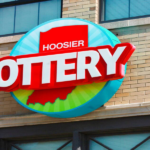Few animals have fascinated humans as much as the black cat. Sleek, mysterious, and often misunderstood, this feline has been the subject of countless legends, myths, and superstitions across cultures and centuries.
While some view the blackcat as a harbinger of bad luck, others revere it as a symbol of protection, magic, and even prosperity. Beyond folklore, blackcats have found their place in literature, art, popular culture, and even as beloved household companions.
This article explores the history, symbolism, and evolving reputation of the blackcat, shining light on why this dark-coated feline continues to intrigue us.
The Historical Roots of Blackcat Symbolism
Blackcats have long been tied to mysticism. In ancient Egypt, cats were considered sacred, and black ones were often associated with the goddess Bastet, who represented protection, fertility, and motherhood.
Killing a cat, especially a black one, was considered a grave offence punishable by law. Egyptians even kept blackcats in their homes as a way to ward off evil spirits and ensure blessings.
In contrast, during the Middle Ages in Europe, blackcats were cast in a much darker role. They were often linked to witches and witchcraft, with many believing they were witches’ familiars—magical companions that could aid in spellcasting.
In some cases, people believed witches could transform into blackcats themselves, making them nearly impossible to catch. This belief fed into the era’s widespread fear of sorcery and led to the persecution of both cats and their owners.
Superstitions Around the World
The blackcat has a complex place in global superstitions. In some cultures, crossing paths with a blackcat is considered bad luck, while in others, it is seen as a sign of good fortune.
- Europe and the United States: In many Western countries, seeing a blackcat cross your path was historically thought to bring misfortune. This belief spread widely and became a core superstition around Halloween.
- Scotland: A blackcat appearing on your doorstep is considered a sign of prosperity and good luck.
- Japan: Blackcats are seen as good omens, especially for single women. Owning one is thought to increase the chances of attracting a suitable partner.
- Sailors’ Tales: Many sailors kept blackcats aboard ships for protection, believing they would bring safe travels and ward off storms. In fact, fishermen’s wives often kept them at home to ensure their husbands returned safely from sea.
These mixed associations show how the blackcat is both feared and revered depending on the cultural context.
Blackcat in Literature and Art
The blackcat has left its pawprints all over the arts. Perhaps the most famous example is Edgar Allan Poe’s short story “The Black Cat”, where the feline becomes a symbol of guilt, madness, and the supernatural. Poe’s chilling use of the blackcat reinforced its eerie reputation and cemented its place in Gothic literature.
In visual art, blackcats often appear in mystical and magical contexts, symbolizing both danger and beauty. Their sleek appearance makes them striking subjects, representing mystery, elegance, and power.
Even in popular culture, the blackcat remains iconic. From Halloween decorations to comic book heroes like Marvel’s “Black Cat,” the animal embodies both allure and intrigue. The character “Black Cat” (Felicia Hardy) in Marvel comics is a skilled thief with feline agility and charm, showing how the symbolism of mystery and independence continues to evolve in modern narratives.
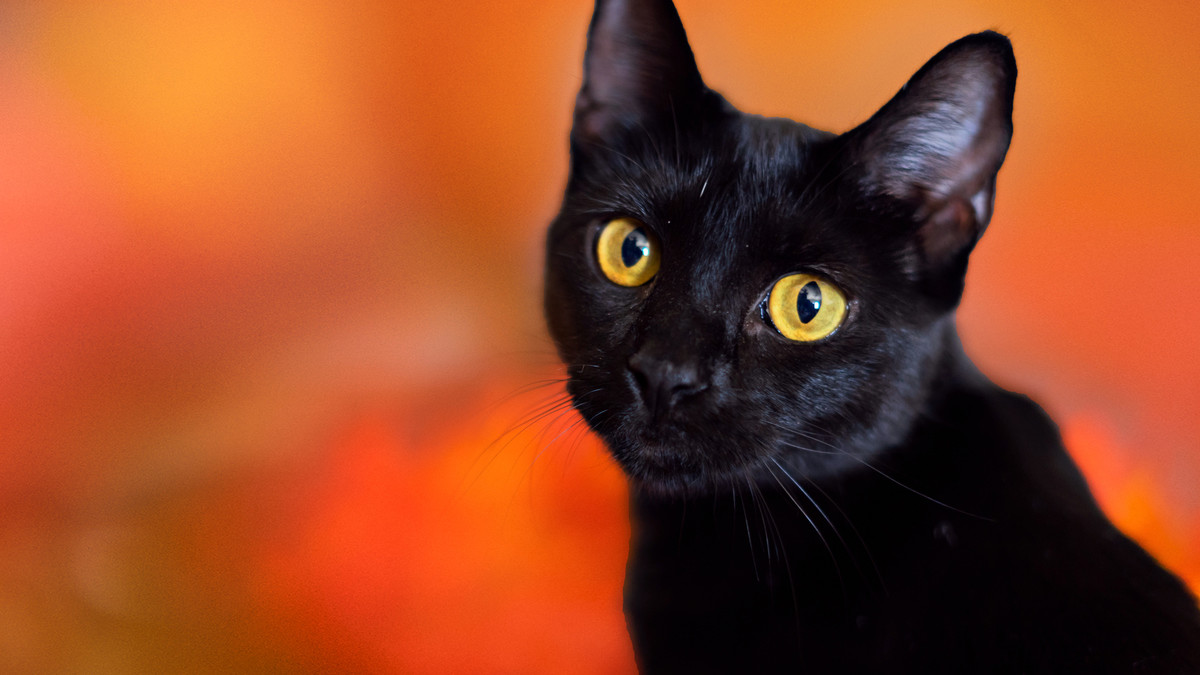
Blackcats as Pets: Misunderstood Companions
Despite their superstitious history, blackcats are no different from cats of other colours. They are playful, loving, and loyal companions. Sadly, shelters often report that blackcats are adopted less frequently than cats of other colours, a phenomenon sometimes called “black cat bias.” This is due to lingering superstitions and the misconception that they are less photogenic.
Animal advocates have worked hard to change this perception. Campaigns such as Black Cat Appreciation Day (August 17) and National Black Cat Day (October 27) celebrate these felines and encourage adoption. Many people who own blackcats say they are among the most affectionate and loyal pets, breaking the stereotype of being “unlucky.”
Blackcat and Halloween
It is impossible to talk about blackcats without mentioning Halloween. Their association with witches, magic, and the supernatural makes them a staple in October decorations. From spooky illustrations to costumes, the blackcat remains a symbol of the holiday.
While this imagery is often fun and playful, it has had some negative consequences. Historically, blackcats faced mistreatment around Halloween due to lingering superstitions. Today, many shelters enforce special policies during October, such as restricting blackcat adoptions, to protect them from harm.
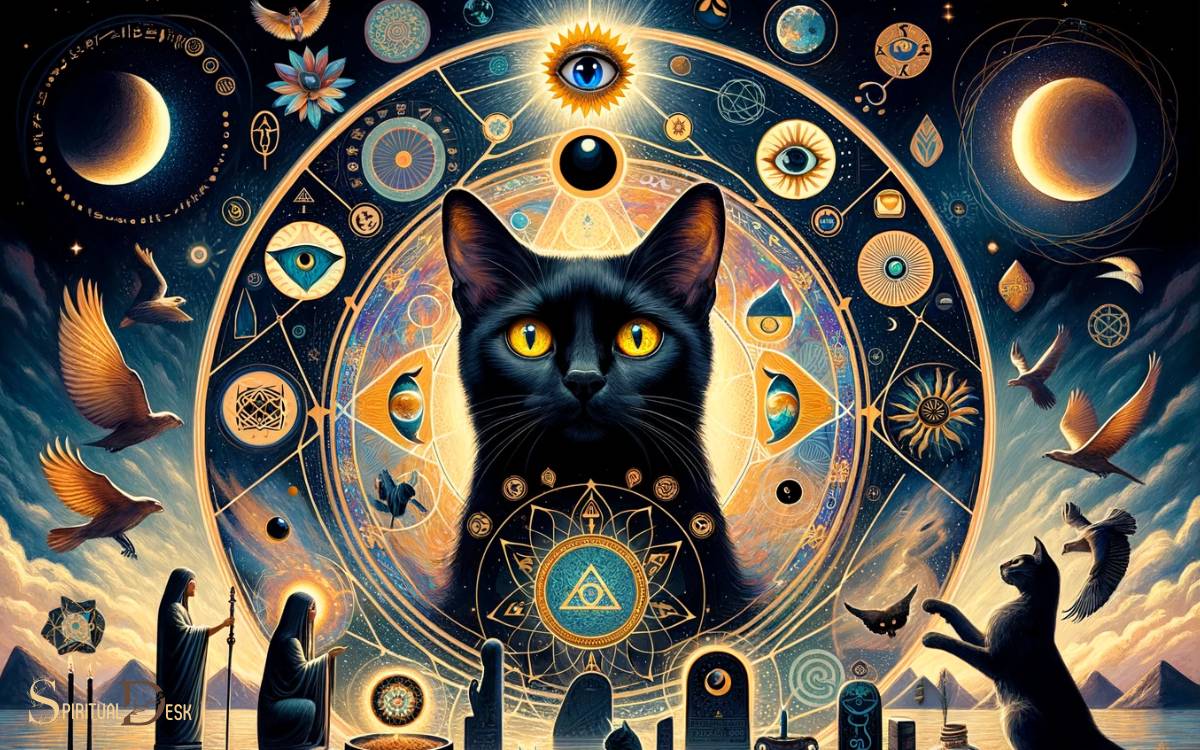
Modern Symbolism of Blackcats
In today’s world, the blackcat represents far more than superstition. For some, it symbolizes independence, resilience, and defiance against stereotypes. Blackcats are also linked to empowerment in certain circles, representing mystery and strength.
In spiritual practices, some view blackcats as protectors, guarding homes from negative energy. Others see them as symbols of transformation and intuition, reflecting the mystical qualities long tied to their presence.
Interestingly, blackcats have even entered the digital age as memes, mascots, and cultural icons. On social media platforms, many accounts are dedicated solely to showcasing their beauty, proving that they are as photogenic as any other feline.
Blackcat in Branding and Pop Culture
The striking image of a blackcat has made its way into branding and entertainment. Companies and sports teams have used the blackcat as a logo, capitalizing on its aura of mystery and power. From nightclubs to energy drinks, the symbol carries an edgy, confident vibe that appeals to younger audiences.
In gaming and anime culture, the blackcat frequently appears as a character or symbol of stealth, agility, and cunning. This continued presence highlights its timeless appeal.
Why the Blackcat Still Matters Today
The enduring fascination with the blackcat lies in its dual nature: feared and loved, mysterious yet ordinary, symbolic yet tangible. It challenges us to reconsider how myths and superstitions shape our view of the natural world.
By re-examining the blackcat, we can see how human beliefs have evolved. Once demonized as an omen of evil, today the blackcat is more often celebrated as a symbol of beauty, independence, and resilience.
Conclusion
The blackcat remains one of the most captivating animals in human culture. From ancient Egyptian reverence to medieval fear, from Poe’s chilling tales to modern-day Halloween decorations, the blackcat has walked a long and winding path through history. Though superstition once clouded its image, today many see it for what it truly is: a sleek, loving, and loyal companion, as deserving of admiration as any other pet.
Whether viewed as a mystical guardian, a gothic symbol, or simply a cherished household friend, the blackcat continues to embody mystery and magic. Its journey through history reminds us not to judge by appearances—and to celebrate the beauty of the overlooked and misunderstood.
Related News:
Rescue Volunteer Attacked By Python While Rescuing Cat




